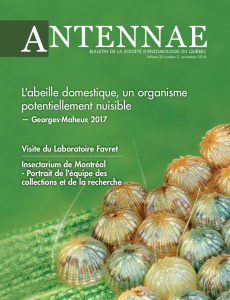Home » Personnel
Category Archives: Personnel
• MSc or PhD scholarship offer: Integrative aphid taxonomy
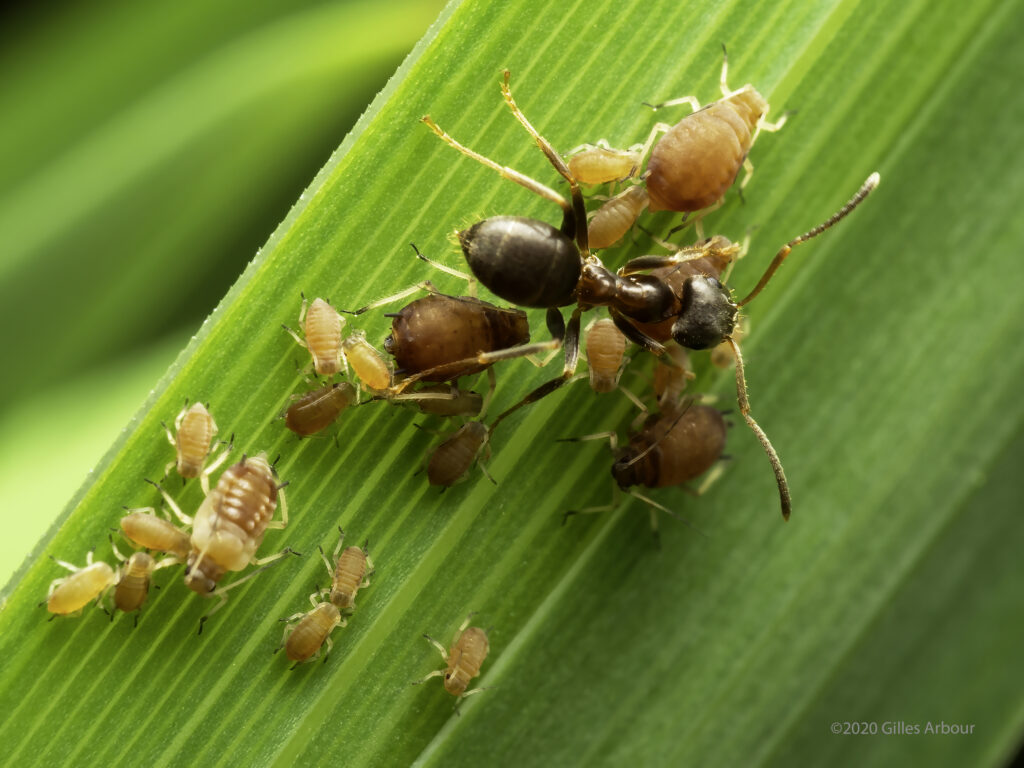
PROJECT SUMMARY
The student will conduct an integrative cybertaxonomic revision of a genus of arboreal aphid using biological data such as DNA sequences, morphology, and host plant association. The project is comprehensive, addressing the discovery, delimitation, diagnosis and description of species or subgenera, as well as the preparation of specimen determination tools. It involves fieldwork, molecular and microscopic lab work, computer analyses and digital data networking.
Although the project focuses on aphids, the goal is to train an entomologist capable of adapting their knowledge and skills to other taxa.
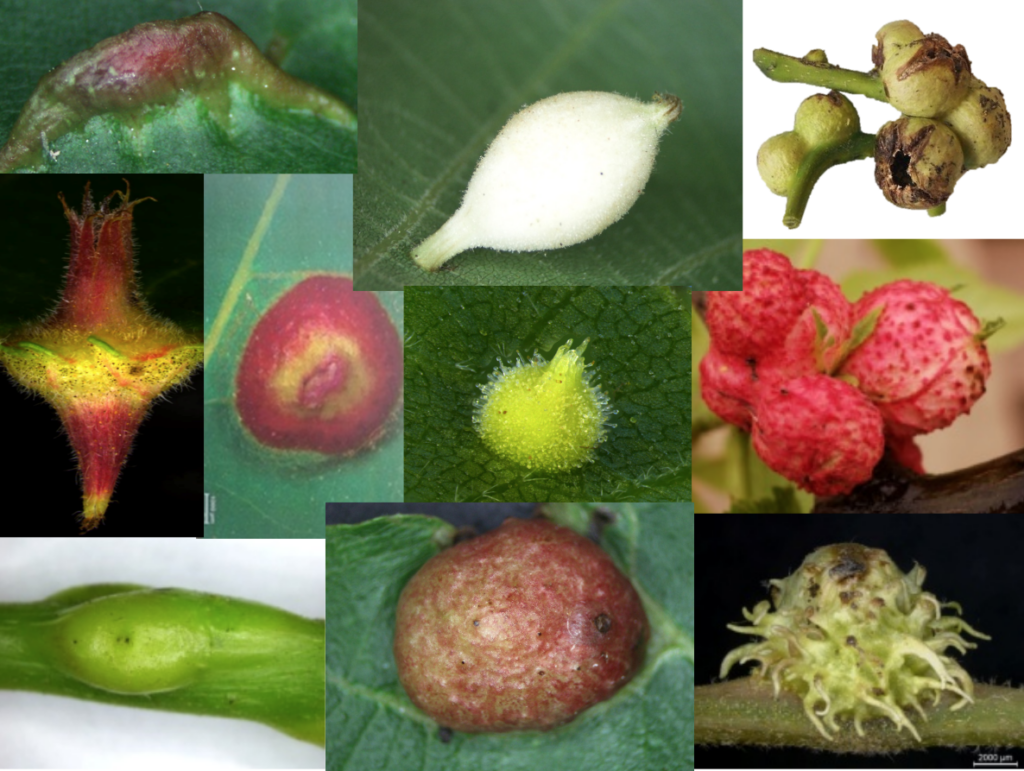
REQUIRED PROFILE
The candidate holds a university degree at the bachelor’s (for MSc) or master’s (for PhD) level, in biology or a related field. He or she has a strong interest in entomology and systematics and meets the eligibility requirements of the Department of Biological Sciences at the University of Montreal. Note that the University of Montreal is a French-language institution and that although proficiency in French is not a requirement for the studentship, it will be an important consideration.
DETAILS
Remuneration: scholarship of $18,000 (MSc) or $20,000/year (PhD); may be supplemented by teaching assistantships and other sources of funding.
Duration: 2 years (MSc) or 4 years (PhD)
Location: Plant Biology Research Institute (IRBV), located on the grounds of the Montreal Botanical Garden
Start date: May or September 2025
Supervision: Colin Favret

TO APPLY
Send to Colin Favret (colin.favret@umontreal.ca) (1) your curriculum vitæ, (2) a one-page cover letter, (3) your transcript(s), and (4) the names and contact information of two people who can serve as references. The position remains open until the best candidate is found.
• MSc scholarship offer: weevil temporal diversity in Panama
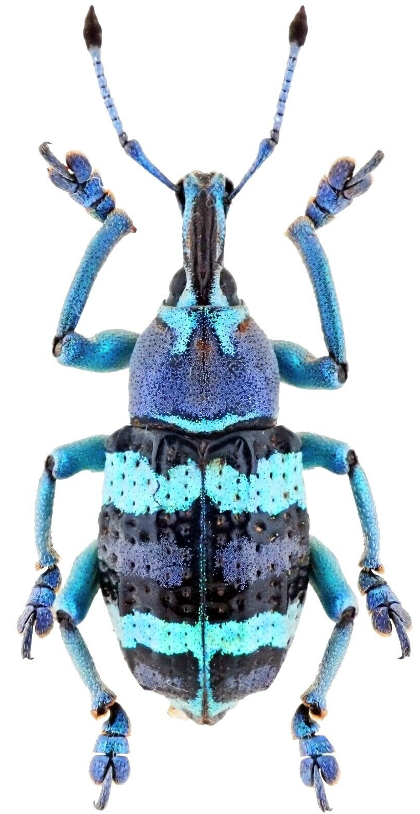
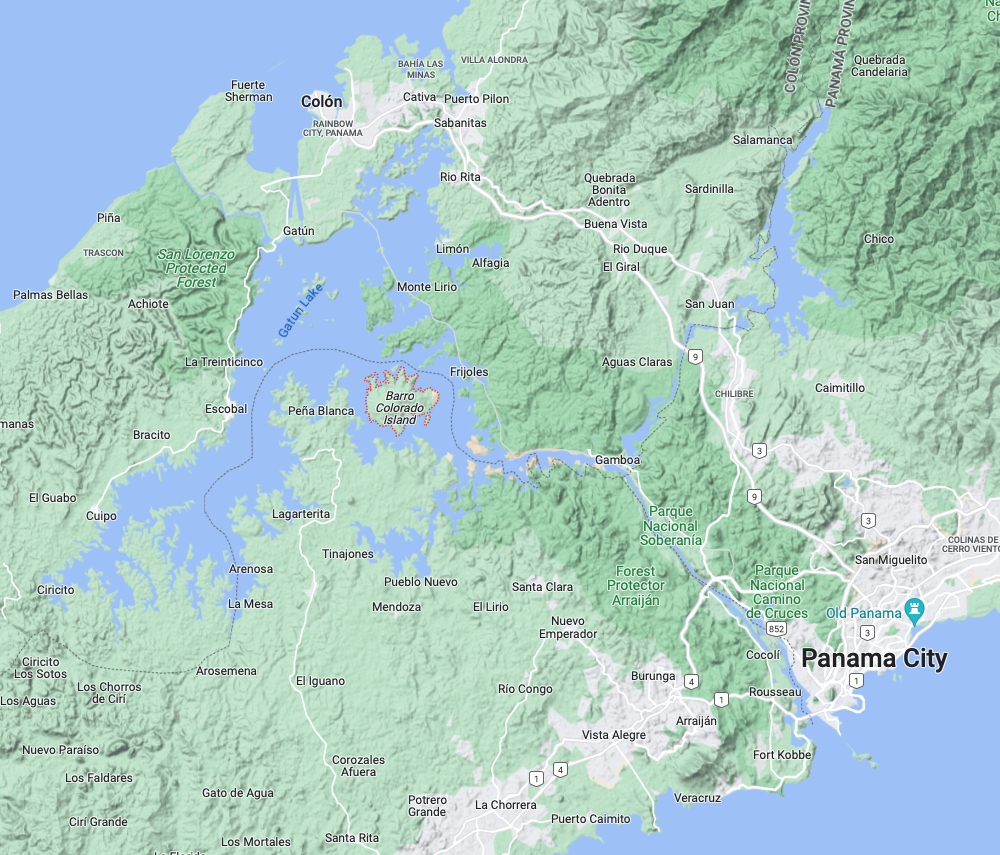
Project description
• From 1999 to 2017, at the Smithsonian Tropical Research Institute’s Barro Colorado Island Biodiversity Research Center in Panama, adjacent to a tropical forest plot established in 1982 for the study of forest evolution, ten Malaise traps systematically captured around 15,000 weevil specimens (family Curculionidae) representing 1,350 species. Specimens were identified by a weevil specialist.
• This computational project will analyze temporal changes in weevil diversity in relation to environmental (mainly climatic) and vegetation changes. The sheer volume of data from the three datasets (insects, plants, meteorology) makes this a project of the highest scientific calibre.
• The person recruited will be supervised by entomologist Colin Favret and numerical ecologist Pierre Legendre, with the participation of tropical beetle specialist Hector Barrios Velazco.
Eligibility requirements
• Interest in computational analysis of biodiversity data and experience in entomology
• University degree (B.Sc. or equivalent)
• Good oral and written communication skills
We encourage women, LGBTQ+, aboriginal, individuals of all backgrounds, or with a disability, to apply.
Benefits
• $15,000/year scholarship for 2 years
• Additional financial support available (teaching assistantships, scholarships)
• Flexible working conditions (flexible hours, remote work)
• Wonderful work environment: entomology lab on the grounds of the Montreal Botanical Garden; supportive team of friendly colleagues
Dates
• Evaluation of applications will begin in November 2023, but applications will be considered until the right candidate is recruited.
• The study program will last two years, starting in the 2024 winter or summer term.
How to apply
• Please send (1) a cover letter, (2) your CV, (3) your transcript (photocopy acceptable), and (4) the names and contact details of two references, to: Colin Favret, colin.favret@umontreal.ca.
• Recruiting: Master’s student in insect pathology
We’re recruiting a motivated student interested in studying insect pathology and insect production for consumption at the University of Montreal starting in September 2022!
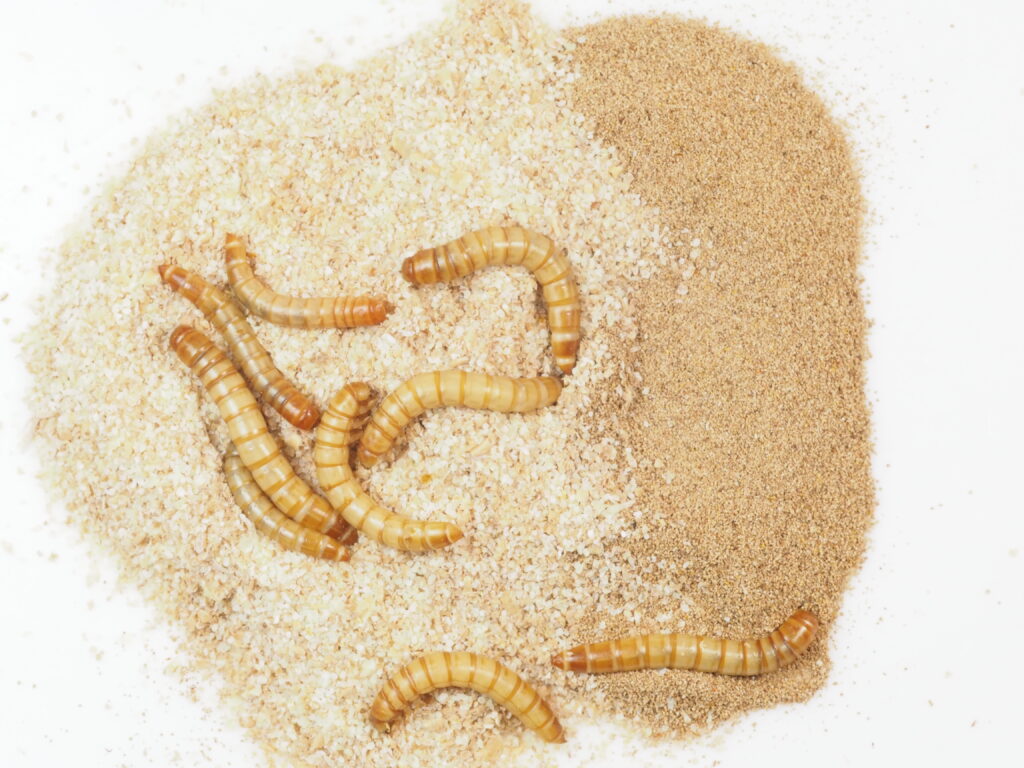
SUMMARY OF THE PROJET. Global demand for animal protein is expected to double by 2050. Following an FAO (2013) publication praising the ecological and nutritional merits of edible insects, as compared to conventional meats, mealworm farming is expanding rapidly. However, insect farms are grappling with rearing problems related to pathogens. Despite the urgency to act, too little is known regarding insect pathogen outbreaks, on preventative methods, and on increasing mealworm immunity. This project aims to characterize different mealworm strains and evaluate rearing methods to improve their resistance to bacterial and fungal pathogens.
CANDIDATE PROFILE. The successful candidate will have a bachelor’s degree in a field of biology and an interest in entomology. The person must also meet the eligibility conditions of the Department of Biological Sciences of the Université de Montréal. French proficiency is not a pre-requisite.
PAY. Scholarship worth $15000/year (supplementable)
DURATION: 2 years, starting September 2022, or as soon as the student arrives
LOCATION: Institut de recherche en biologie végétale, on the grounds of the Montreal botanic garden
SUPERVISION: Colin Favret and Étienne Normandin
HOW TO APPLY. Send your curriculum vitæ, a one-page cover letter, and your university grade transcript to Étienne Normandin (etienne.normandin-leclerc@umontreal.ca). The position will remain open until filled.
• Newly minted: Dr Dabré
Many congratulations to the new PhD! Élisée successfully defended his dissertation 28 March 2022 and has since submitted the final version to the university: The effects of arbuscular mycorrhizal fungal and rhizobacterial inoculants on soybean insects. Soil microorganism inoculants are often used in agriculture to boost the growth and hence the yield of various crops, including soybean. However, it is not clear how these inoculants might affect pest insects feeding on the plants. Perhaps the inoculants, by stimulating plant growth, contribute to providing a larger, healthier meal to herbivorous insects, increasing negative pest effects. Alternatively, if the inoculants increase the health and vigor of the plants, perhaps they help the plants defend themselves against herbivorous insects. Finally, if the herbivorous insects are affected by the presence of soil inoculants, whether positively or negatively, might those effects be transmitted to the next trophic level, that is, to the predators and parasites of the herbivorous insects?
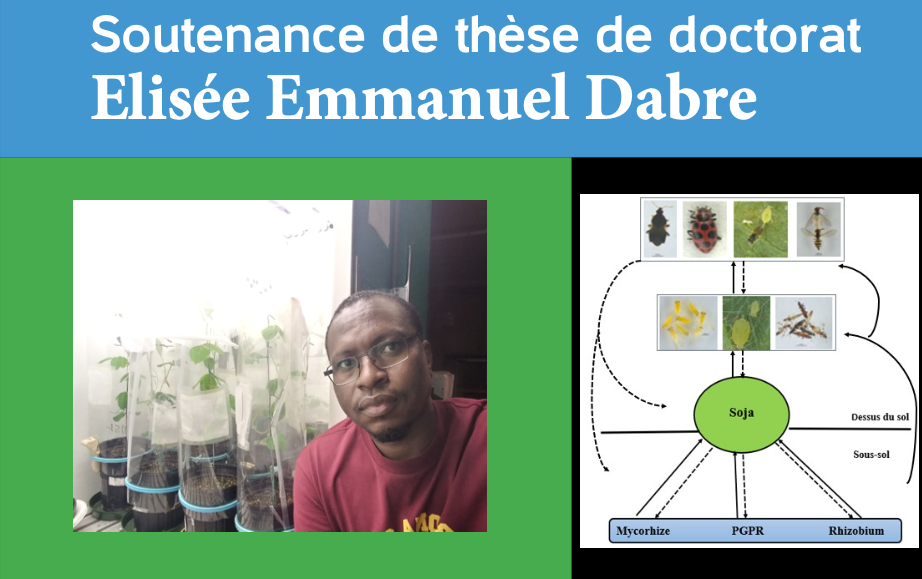
Élisée’s dissertation is composed of three scientific chapters, each examining these issues at different organizational levels: the first and second trophic levels (aphids on soybean); the third trophic level (a predator and a parasitoid of the soybean aphid); the insect community in an agricultural field.
In his first manuscript, he found that, in a laboratory setting, the presence of arbuscular mycorrhizal fungal and rhizobacterial inoculants enhanced both the growth of soybean itself and the population growth of the soybean aphid. There was a synergistic effect where the two inoculants stimulated plant and aphid population growth more than either inoculant alone.
In his second manuscript, Élisée took the same model system and measured the development time and other health parameters of a ladybird beetle predator and a parasitoid wasp feeding on aphids reared on plants growing in inoculated soil. In this experiment, he found that whatever effects inoculation had on soybean aphids were not generally transferred to the next trophic level.
Finally, in his third manuscript, published in PLOS ONE, Élisée looked at the effects on the insect community of the field-inoculation of arbuscular mycorrhizal fungi and rhizobacteria, as well as the effects on the insect community of different levels of mycorrhizal colonization of soybean roots. Just as inoculation stimulated aphid colony growth in his first experiment, Élisée found a greater abundance of piercing-sucking insects (notably the soybean aphid and leafhoppers) in inoculant-treated parcels. However, and contrary to that finding, he found a negative correlation between the rate of mycorrhizal colonization and the abundance and diversity of piercing-sucking and chewing herbivorous insects. This is a very complicated study system: as well as the inoculated microorganisms, the ‘natural’ agricultural environment also has a native flora whose abundance and diversity Élisée was not able to measure.

• Dabré ÉE, Lee Soon-Jae, Hijri M, Favret C. 2021. The effects of mycorrhizal colonization on phytophagous insects and their natural enemies in soybean fields. PLOS ONE 16(9): e0257712. DOI: 10.1371/journal.pone.0257712
• Adwa receives her master’s
Adwa ABDOU ALI’s thesis has just been formally accepted by the university! Her research, culminating in her thesis titled Insects of the date palm in traditional and modern orchards of Djibouti, compared the abundance of several potential insect pests of date palms in modern, monocultural orchards, and in older, traditional, and polycultural orchards, the kind one might find growing around oases. Both orchard types harbored potential pests, but the modern ones had more pests specialist of date palm, whereas the traditional orchards had a greater abundance of generalist pests.
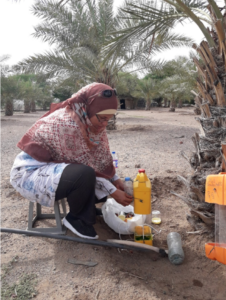
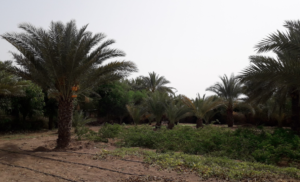
Here’s the abstract:
In recent years, food insecurity and poverty, especially among the rural populations of Djibouti, have been increasing due to population growth and rising world food prices.
As a result, the government of Djibouti seeks to develop sustainable agriculture through date farming. The cultivation of date palms adapts well to the difficult pedoclimatic conditions of the Republic of Djibouti. Massive introductions of date palm have taken place in recent years to restore the older traditional palm groves (polycultures) and to create and/or extend new palm groves oriented towards monoculture.
However, the country faces major phytosanitary challenges: poor infrastructure, insufficient knowledge and a lack of research on the pests of this crop.
With the ultimate aim of protecting and increasing Djibouti’s date yields, this present work seeks to assess the susceptibility of palm groves to insect pests. To achieve this objective, a comparison of the insect fauna of the two types of palm groves was carried out using composite traps placed within the crown of the date palm. The experiment was carried out from 20 June to 2 September 2018, in six orchards on three sites.
The samples documented the existence and diversity of insects in these palm groves, as well as the presence and abundance of specialist date palm pests in monocultural palm groves. Natural enemies were also particularly abundant in the traditional palm groves, but species-level diversity did not show any correlations with type of palm grove.
This study contributes to the knowledge of insect diversity and potential pest species in the palm groves of Djibouti. These pests can have an important impact on date yields depending on the type of palm grove and this study thus underlines the needs to develop adequate means of pest control.
Congratulations Adwa!
• Thomas receives his PhD
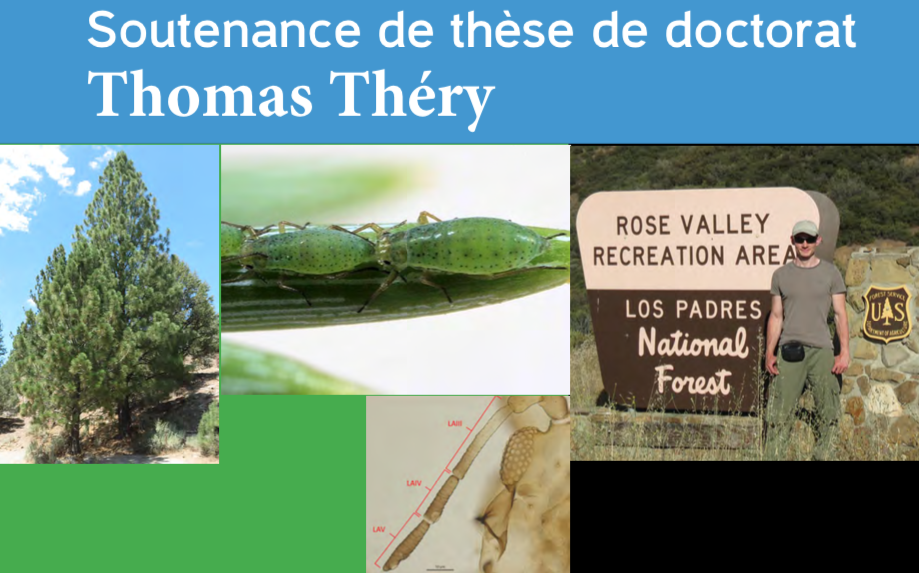
In April 2018, Thomas Théry successfully defended his doctoral dissertation. Almost a year later, his erstwhile advisor publicly celebrates the completion of his first PhD student’s studies. Entitled “Molecular systematics of the genus Essigella (Hemiptera: Sternorrhyncha)“, Thomas’s dissertation presented three published chapters.
Species of the aphid genus Essigella are found natively only in North America, feeding along the lengths of pine needles. The taxonomy of the genus was last treated by John Sorensen in 1994. He used difficult, time-consuming, but effective multi-variate morphometric methods to delineate the species. Thomas sought to corroborate or challenge Sorensen’s taxon concepts using molecular methods. In his first chapter, published in Insect Systematics and Diversity, Thomas used genes from the aphids’ nucleus, mitochondrion, and obligate nutritional symbiont Buchnera aphidicola and several molecular species delimitation methods. It was indeed a relief and a pleasure to find that, by and large, his results corroborated Sorensen’s.
Thomas did find a few additional species, however, and he proceeded to describe and name them formally in his follow-up publication in ZooKeys. Thomas’s species descriptions were innovative in that he used actual genetic nucleotide differences as diagnostic characters for his new species, something rarely done in animal taxonomy and never done before with aphids. Not to court too much controversy, Thomas made certain to include morphological diagnoses as well! The third chapter of Thomas’s dissertation was actually the first one published. We’ve already described that work on the Monterey pine needle aphid colonizing new geographic regions.
Thomas landed a full-time employment at the Insectarium of Montreal, just next door to the Biodiversity Centre, so we are pleased to see him regularly as he comes to work on his beetles at the Ouellet-Robert collection. Yes, that means that despite having worked on aphids for his PhD, we were unsuccessful at taking the histerid out of this coleopterist. We’re proud of you anyway, Dr Théry, congratulations!
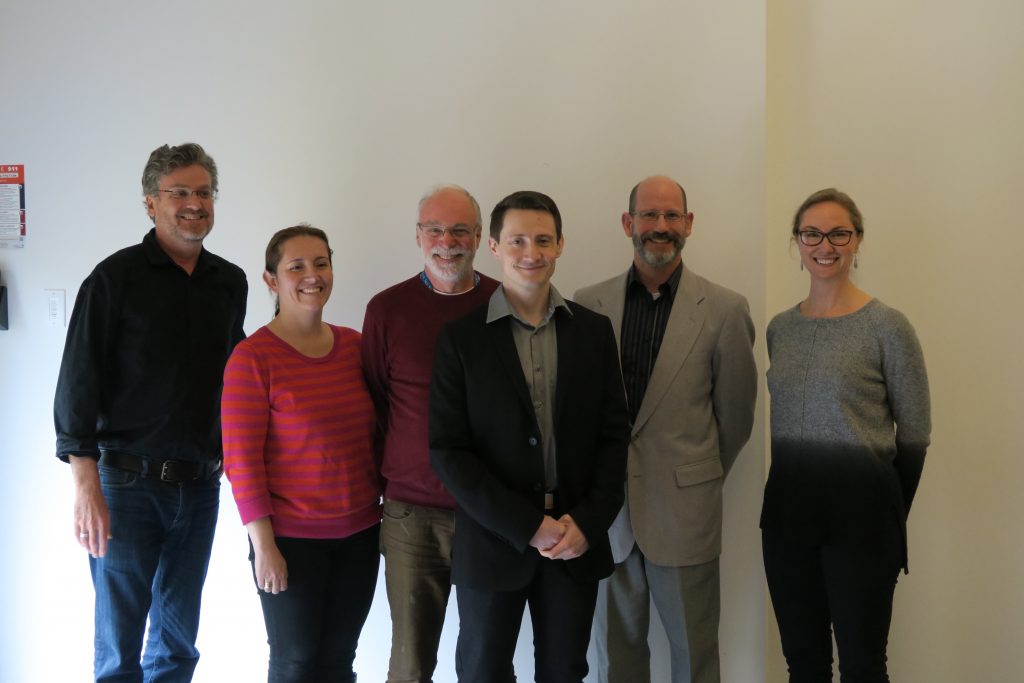
Théry T, Kanturski M, Favret C. 2018. Molecular phylogenetic analysis and species delimitation in the pine needle-feeding aphid genus Essigella(Hemiptera, Sternorrhyncha, Aphididae). Insect Systematics and Diversity, 2(4):1;1-15. DOI: 10.1093/isd/ixy006
Théry T, Kanturski M, Favret C. 2018. Molecular data and species diagnosis in Essigella Del Guercio, 1909 (Sternorrhyncha, Aphididae, Lachninae). ZooKeys, 765: 103-122. DOI: 10.3897/zookeys.765.24144
Théry T, Brockerhoff EG, Carnegie AJ, Chen Rui, Elms SR, Hullé M, Glatz R, Ortego J, Qiao Gexia, Turpeau É, Favret C. 2017. EF-1α DNA sequences indicate multiple origins of introduced populations of Essigella californica(Hemiptera, Aphididae). Journal of Economic Entomology, 110(3): 1269-1274. DOI: 10.1093/jee/tox026
• The lab is featured by the SEQ
The members of the lab were featured in the spring (2018) issue of Antennae, the Bulletin of the Quebec Entomology Society. Read it here in French.
• Anaïs wins best presentation at the departmental symposium
Best presentation in ecology and evolution at the 17th annual symposium. Congratulations Anaïs!
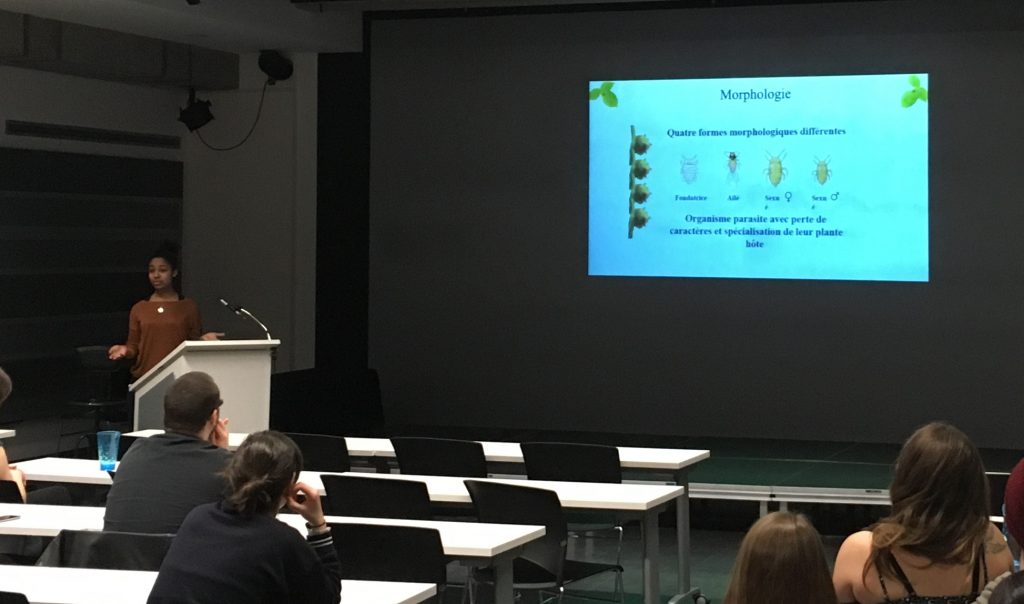
• Thomas Théry wins excellence in teaching award
Thomas won the University of Montreal’s President’s prize for excellence in teaching by a teaching assistant.
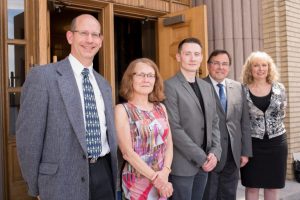

• Étienne Normandin: Collection manager
We have recruited Étienne Normandin to be the manager of the Ouellet-Robert collection. Welcome Étienne! Send him your congratulations: qmor.umontreal@gmail.com

